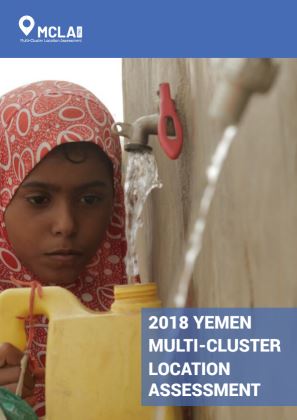-
Countries
-
Data and Analysis
-
Special Focus
-
Crisis Responses
Yemen – Multi Cluster Location Assessment

Contact
DTM Yemen, iomyemendtm@iom.int
Language
English
Location
Yemen
Period Covered
Oct 15 2018
Nov 30 2018
Activity
- Other
More than three and a half years since the escalation of conflict in Yemen, the civilian population continues to bear the burden of active conflict and economic decline, while suffering from extreme hunger and the deterioration of infrastructure. In this context of severe needs and scarce resources, the Multi Cluster Locations Assessment (MCLA) was designed and implemented based on the imperative to address information gaps and improve evidence-based humanitarian resource allocation across geographical areas, sectors, and population groups. More specifically, the MCLA aimed at providing a nationwide evidence base for the 2019 Humanitarian Needs Overview (HNO).
The MCLA Technical Working Group (TWG) leading the exercise was formed in May 2018 by the Assessment and Monitoring Working Group (AMWG). It is composed of the United Nations Office for the Coordination of Humanitarian Affairs (OCHA), the International Organisation for Migration (IOM), and the United Nations High Commissioner for Refugees (UNHCR), and it worked in close coordination with the Inter Cluster Coordination Mechanism (ICCM) and relevant authorities. With the support of clusters, the TWG designed the MCLA questionnaire so as to assess the local demographic profile, displacement dynamics, key vulnerabilities, access to basic services, and humanitarian needs of six population groups: internally displaced persons (IDPs), returnees, host communities (HC), non-host communities (non-HC), refugees, and migrants. Furthermore, the MCLA sought to identify the forms of humanitarian aid received by the affected populations, and their alignment with minimum standards and priority needs.
The MCLA covered 331 out of the 333 districts in Yemen and completed 8,024 questionnaires through more than 21,000 Key Informant Interviews (KIIs) conducted between September and November 2018 in 6,791 locations. The number of KIIs conducted per population group was proportional to the sizes of the target population groups in Yemen, and the target locations were randomly selected within each district. As the information collected in the MCLA is based on KIIs and is therefore not statistically representative, figures produced by the MCLA should be considered as indicative and interpreted as trends.
